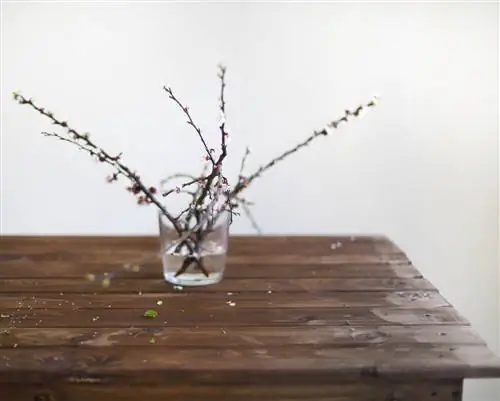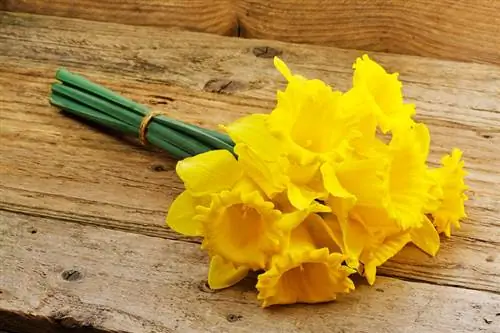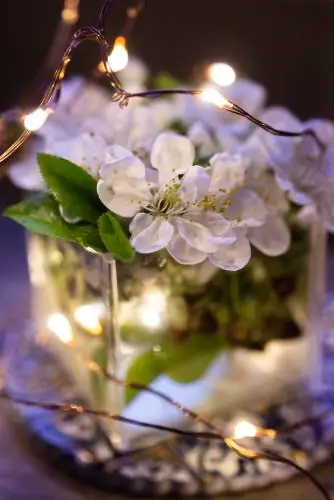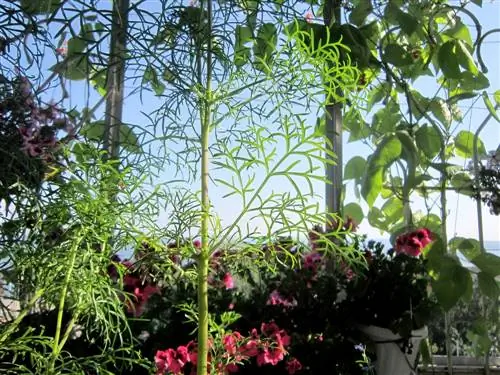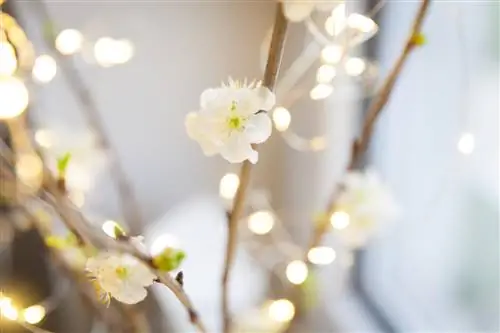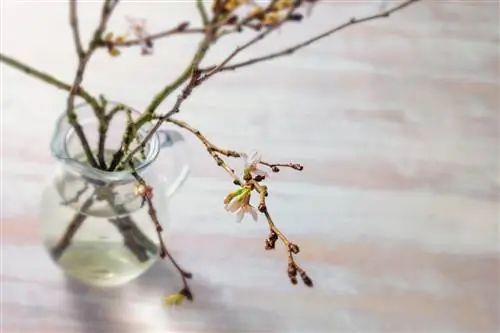- Author admin [email protected].
- Public 2023-12-16 16:46.
- Last modified 2025-01-23 11:21.
In many areas it is already a very old tradition to cut Barbara branches at the beginning of December. In the midst of winter cold and darkness, it always seems like a small miracle when the flower buds in the vase open right up to Christmas.
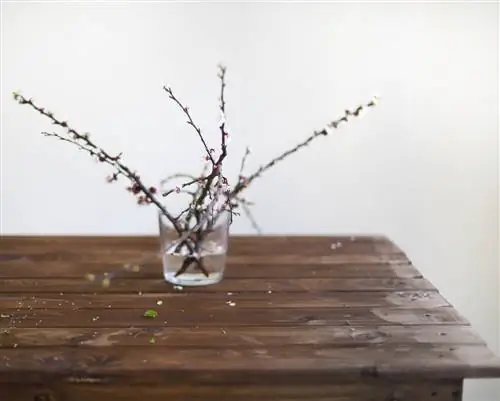
How do you cut Barbara branches correctly?
To cut Barbara branches correctly, choose suitable plant species such as cherry trees, apple trees or forsythia, pay attention to flower buds, cut the branches at a right angle and give them a cold stimulus before placing them in the vase.
The Legend of Saint Barbara
The name “Barbara branches” goes back to the legend of Saint Barbara: a branch is said to have gotten caught in the martyr's dress on the way to the dungeon, which she supplied with water during her captivity. On the very day of her execution, flowers are said to have appeared on this branch. The so-called “Barbara Day” in memory of the patron saint of miners is set annually on December 4th. In practical terms, this date makes sense for pruning Barbara branches because the period of around three weeks until Christmas is exactly the right time for the blossoms on most types of Barbara branches. In rural areas of Bavaria, the number of flowers on the cut Barbara branches used to be said to have significance about agricultural success in the following year.
Suitable plant varieties for cutting Barbara branches
Traditionally, the branches of the cherry tree are preferred for cutting Barbara branches. However, a whole range of other plant species can also be considered for cutting Barbara branches. You can probably find at least one of the following plant species in your garden:
- Apple tree
- Plum tree
- pear tree
- Forsythia
- Blood Currant
- Cornelian cherry
- Japanese ornamental cherry
- Almond tree or ornamental almond tree
Choosing the right branches
If you cut branches from trees and bushes in the garden especially for the small, winter flower miracle in the room, then you should also ensure that the result is as decorative as possible when selecting the branches. You should know that sour cherries, for example, bloom on annual, long branches without cross-branches. Apples and plums, on the other hand, bloom on the two-year-old wood, which you can recognize by the small side branches. Also pay attention to the number of flower buds that are already visible on the branches: While leaf buds on many plant species tend to look pointed, flower buds are usually rounder and thicker.
This is how Barbara branches bloom relatively reliably in the vase
So that the interfaces on the trees and bushes in the garden can heal easily, the Barbara branches are cut at a right angle with sharp planting scissors (€14.00 on Amazon). In order for the flower buds to actually bloom in the vase, the branches need a cold stimulus. If the temperatures were relatively mild in the year in question and there were no severe frosts, then you should place the cut Barbara branches in a freezer for around 12 to 24 hours. After soaking in lukewarm water for several hours, the branches are then cut diagonally at the bottom before being placed in the vase. This improves the ability to absorb water. You should change the water in the vase every two to three days so that germs and bacteria don't have a chance. In addition, the Barbara branches should not be exposed too directly to dry heating air, otherwise they will dry out quickly or drop the flowers.
Tip
The Barbara branches should initially be placed in a bright but not too warm place in the house, such as an unheated winter garden. The perfect floral splendor can be experienced if the vase with the branches is moved to the warm living room shortly before the buds bloom.

